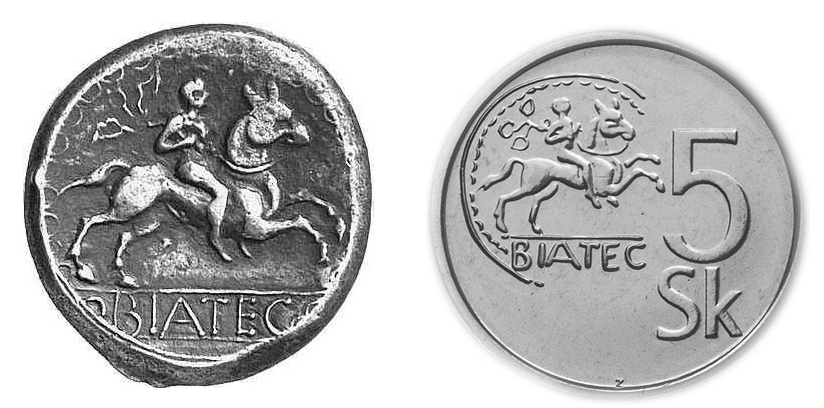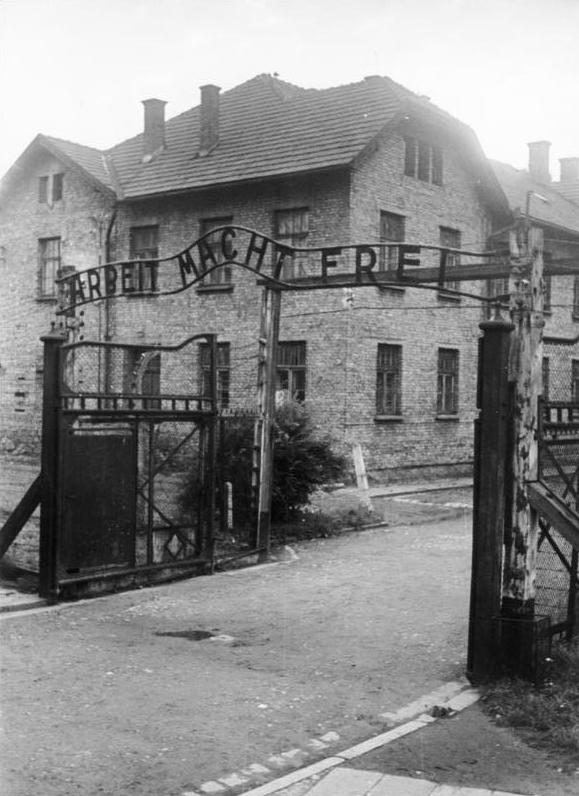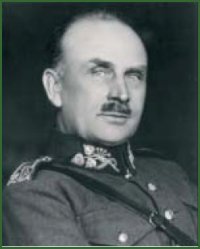|
Kamil Krofta
Kamil Krofta (17 July 1876 – 16 August 1945) was a Czech historian and diplomat.Honajzer George (1995). ''Vznik a rozpad vládních koalic v Československu v letech 1918-1938.'' stablishment and dissolution of government coalitions in Czechoslovakia in the years 1918-1938.Prague: Orbis. Life and career Born and schooled in Plzeň, he studied history in Prague starting in 1894, then from 1896 to 1899 in Vienna. From 1901 he worked at the National Archives. Beginning in 1911, he was a professor of Austrian (and later, Czech) history at Charles University, following the Jaroslav Goll school of thought. In his research, he focused on the late medieval and early Czech history, especially that of the peasantry as well as the church. In 1920, he became the first Czechoslovak envoy to The Vatican and was instrumental in the mutual recognition of both states. From 1922 until 1925, he resided as envoy in Vienna and lectured at the Comenius University in Bratislava. From 1925 to 1 ... [...More Info...] [...Related Items...] OR: [Wikipedia] [Google] [Baidu] |
Ministry Of Foreign Affairs (Czechoslovakia)
, native_name_a = sk, Ministerstvo zahraničných vecí , native_name_r = , type = Ministry , seal = , seal_width = , seal_caption = , logo = , logo_width = , logo_caption = , image = , image_size = , image_caption = , formed = , preceding1 = , preceding2 = , dissolved = , superseding1 = , superseding2 = , jurisdiction = Czechoslovakia , headquarters = Prague, Czechoslovakia , coordinates = , motto = , employees = , budget = , minister1_name = Edvard Beneš , minister1_pfo = first Minister of Foreign Affairs , minister2_name = Jozef Moravčík , minister2_pfo = last Minister of Foreign Affairs , deputyminister1_name = , deputyminister1_pfo = , deputym ... [...More Info...] [...Related Items...] OR: [Wikipedia] [Google] [Baidu] |
Bratislava
Bratislava (, also ; ; german: Preßburg/Pressburg ; hu, Pozsony) is the capital and largest city of Slovakia. Officially, the population of the city is about 475,000; however, it is estimated to be more than 660,000 — approximately 140% of the official figures. Bratislava is in southwestern Slovakia at the foot of the Little Carpathians, occupying both banks of the River Danube and the left bank of the River Morava. Bordering Austria and Hungary, it is the only national capital that borders two sovereign states. The city's history has been influenced by people of many nations and religions, including Austrians, Bulgarians, Croats, Czechs, Germans, Hungarians, Jews, Romani, Serbs and Slovaks. It was the coronation site and legislative center and capital of the Kingdom of Hungary from 1536 to 1783; eleven Hungarian kings and eight queens were crowned in St Martin's Cathedral. Most Hungarian parliament assemblies were held here from the 17th century until the Hunga ... [...More Info...] [...Related Items...] OR: [Wikipedia] [Google] [Baidu] |
Writers From Plzeň
A writer is a person who uses written words in different writing styles and techniques to communicate ideas. Writers produce different forms of literary art and creative writing such as novels, short stories, books, poetry, travelogues, plays, screenplays, teleplays, songs, and essays as well as other reports and news articles that may be of interest to the general public. Writers' texts are published across a wide range of media. Skilled writers who are able to use language to express ideas well, often contribute significantly to the cultural content of a society. The term "writer" is also used elsewhere in the arts and music, such as songwriter or a screenwriter, but also a stand-alone "writer" typically refers to the creation of written language. Some writers work from an oral tradition. Writers can produce material across a number of genres, fictional or non-fictional. Other writers use multiple media such as graphics or illustration to enhance the communication of thei ... [...More Info...] [...Related Items...] OR: [Wikipedia] [Google] [Baidu] |
1945 Deaths
1945 marked the end of World War II and the fall of Nazi Germany and the Empire of Japan. It is also the only year in which nuclear weapons have been used in combat. Events Below, the events of World War II have the "WWII" prefix. January * January 1 – WWII: ** Germany begins Operation Bodenplatte, an attempt by the ''Luftwaffe'' to cripple Allied air forces in the Low Countries. ** Chenogne massacre: German prisoners are allegedly killed by American forces near the village of Chenogne, Belgium. * January 6 – WWII: A German offensive recaptures Esztergom, Hungary from the Russians. * January 12 – WWII: The Soviet Union begins the Vistula–Oder Offensive in Eastern Europe, against the German Army. * January 13 – WWII: The Soviet Union begins the East Prussian Offensive, to eliminate German forces in East Prussia. * January 16 – WWII: Adolf Hitler takes residence in the ''Führerbunker'' in Berlin. * January 17 ** WWII: The Soviet Union occupies Warsaw, Polan ... [...More Info...] [...Related Items...] OR: [Wikipedia] [Google] [Baidu] |
1876 Births
Events January–March * January 1 ** The Reichsbank opens in Berlin. ** The Bass Brewery Red Triangle becomes the world's first registered trademark symbol. * February 2 – The National League, National League of Professional Base Ball Clubs is formed at a meeting in Chicago; it replaces the National Association of Professional Base Ball Players. Morgan Bulkeley of the Hartford Dark Blues is selected as the league's first president. * February 2 – Third Carlist War – Battle of Montejurra: The new commander General Fernando Primo de Rivera marches on the remaining Carlist stronghold at Estella-Lizarra, Estella, where he meets a force of about 1,600 men under General Carlos Calderón, at nearby Montejurra. After a courageous and costly defence, Calderón is forced to withdraw. * February 14 – Alexander Graham Bell applies for a patent for the telephone, as does Elisha Gray. * February 19 – Third Carlist War: Government troops under General Pr ... [...More Info...] [...Related Items...] OR: [Wikipedia] [Google] [Baidu] |
Order Of Saint Sava
The Royal Order of St. Sava is an Order of merit, first awarded by the Kingdom of Serbia in 1883 and later by the Kingdom of Serbs, Croats and Slovenes, and the Kingdom of Yugoslavia. It was awarded to nationals and foreigners for meritorious achievements in the field of religion, education, science and the arts as well as for social and relief work. The order was abolished in 1945 with the proclamation of the People’s Federal Republic of Yugoslavia and the end of the monarchy. It continues as a dynastic order, with appointments currently made by Alexander, Crown Prince of Yugoslavia. An homonymous order was established in 1985, conferred by the Serbian Orthodox Church to ecclesiastic and secular persons with special merits. History of the state order The Order of Saint Sava was established by Milan I of Serbia, four years after the country gained independence and its transformation from a principality into a kingdom in March 1882. It was first awarded in January 1883 to re ... [...More Info...] [...Related Items...] OR: [Wikipedia] [Google] [Baidu] |
Terezín
Terezín (; german: Theresienstadt) is a town in Litoměřice District in the Ústí nad Labem Region of the Czech Republic. It has about 2,800 inhabitants. It is a former military fortress composed of the citadel and adjacent walled garrison town. The town centre is well preserved and is protected by law as an urban monument reservation. Terezin is most infamously the location of the Nazis' notorious Theresienstadt Ghetto. Administrative parts Villages of České Kopisty, Nové Kopisty and Počaply are administrative parts of Terezín. Geography Terezín is located about south of Litoměřice and southeast of Ústí nad Labem. It lies in a flat landscape of the Lower Eger Table. It is situated on both banks of the Ohře River, near its confluence with the Elbe. The Elbe forms the northern municipal border. History On 10 January 1780, the Habsburg emperor Joseph II ordered the erection of the fortress, named ''Theresienstadt'' after his mother Empress Maria Theresa. In the ... [...More Info...] [...Related Items...] OR: [Wikipedia] [Google] [Baidu] |
Small Fortress (Terezín)
The Small Fortress ( cs, Malá pevnost, german: Kleine Festung) is a fortress forming a significant part of the town of Terezín in the Czech Republic. This former military fortress was established at the end of the 18th century together with the whole town of Terezín on the right bank of the Ohře river. It served as a prison in the 19th century. World War I During World War I, the fortress served as a prison for the opponents of the Austro-Hungarian monarchy. During the war, Serbian nationalist Gavrilo Princip, assassin of Archduke Franz Ferdinand of Austria, was imprisoned here. Princip died after nearly four years in the prison on 28 April 1918 of tuberculosis. World War II During World War II, the fortress served as a prison for the Prague Gestapo from 10 June 1940 until May 1945. It was the largest prison in the Protectorate of Bohemia and Moravia. Unlike the Terezín Ghetto, where the Jews were imprisoned, the Small Fortress served as a prison for the politica ... [...More Info...] [...Related Items...] OR: [Wikipedia] [Google] [Baidu] |
Pankrác Prison
Pankrác Prison, officially Prague Pankrác Remand Prison (''Vazební věznice Praha Pankrác'' in Czech), is a prison in Prague, Czech Republic. A part of the Czech Prison Service, it is located southeast of Prague city centre in Pankrác, not far from Pražského povstání metro station on Line C. It is used in part for persons awaiting trial and partly for convicted prisoners. Since 2008, women have also been incarcerated here. History 1885–1938 The prison was built in 1885–1889 in order to replace the obsolete St Wenceslas Prison (''Svatováclavská trestnice''), which used to stand between Charles Square and the Vltava River. At the time of its construction, the site for the new prison was out of city limits, amidst fields above Nusle suburb. Nevertheless, the expanding Prague encompassed the prison within several decades. At the time of its opening, the prison was a fairly modern institution with hot air central heating; solitary confinement cells had hot wate ... [...More Info...] [...Related Items...] OR: [Wikipedia] [Google] [Baidu] |
World War II
World War II or the Second World War, often abbreviated as WWII or WW2, was a world war that lasted from 1939 to 1945. It involved the World War II by country, vast majority of the world's countries—including all of the great powers—forming two opposing military alliances: the Allies of World War II, Allies and the Axis powers. World War II was a total war that directly involved more than 100 million Military personnel, personnel from more than 30 countries. The major participants in the war threw their entire economic, industrial, and scientific capabilities behind the war effort, blurring the distinction between civilian and military resources. Air warfare of World War II, Aircraft played a major role in the conflict, enabling the strategic bombing of population centres and deploying the Atomic bombings of Hiroshima and Nagasaki, only two nuclear weapons ever used in war. World War II was by far the List of wars by death toll, deadliest conflict in hu ... [...More Info...] [...Related Items...] OR: [Wikipedia] [Google] [Baidu] |
German Occupation Of Czechoslovakia
German(s) may refer to: * Germany (of or related to) **Germania (historical use) * Germans, citizens of Germany, people of German ancestry, or native speakers of the German language ** For citizens of Germany, see also German nationality law **Germanic peoples (Roman times) * German language **any of the Germanic languages * German cuisine, traditional foods of Germany People * German (given name) * German (surname) * Germán, a Spanish name Places * German (parish), Isle of Man * German, Albania, or Gërmej * German, Bulgaria * German, Iran * German, North Macedonia * German, New York, U.S. * Agios Germanos, Greece Other uses * German (mythology), a South Slavic mythological being * Germans (band), a Canadian rock band * "German" (song), a 2019 song by No Money Enterprise * ''The German'', a 2008 short film * "The Germans", an episode of ''Fawlty Towers'' * ''The German'', a nickname for Congolese rebel André Kisase Ngandu See also * Germanic (disambiguation ... [...More Info...] [...Related Items...] OR: [Wikipedia] [Google] [Baidu] |
New York Times
''The New York Times'' (''the Times'', ''NYT'', or the Gray Lady) is a daily newspaper based in New York City with a worldwide readership reported in 2020 to comprise a declining 840,000 paid print subscribers, and a growing 6 million paid digital subscribers. It also is a producer of popular podcasts such as '' The Daily''. Founded in 1851 by Henry Jarvis Raymond and George Jones, it was initially published by Raymond, Jones & Company. The ''Times'' has won 132 Pulitzer Prizes, the most of any newspaper, and has long been regarded as a national "newspaper of record". For print it is ranked 18th in the world by circulation and 3rd in the U.S. The paper is owned by the New York Times Company, which is publicly traded. It has been governed by the Sulzberger family since 1896, through a dual-class share structure after its shares became publicly traded. A. G. Sulzberger, the paper's publisher and the company's chairman, is the fifth generation of the family to head the p ... [...More Info...] [...Related Items...] OR: [Wikipedia] [Google] [Baidu] |







.png)